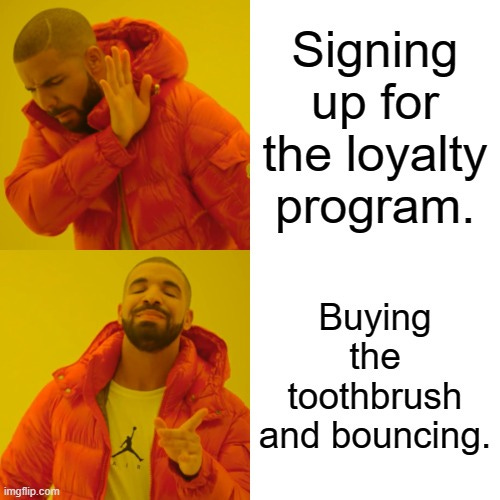A big audience is great. Here's what's better.
Knowledge is power. It can also lead publishers to more money.
I had a fascinating conversation with a person in the marketing world recently in which they were discussing the process of audience acquisition. Based on their metrics, they “know” they can spend $1,000,000 to acquire 500,000 new users. (In this case these are podcast listeners, but the example holds for different media types as well.) Given their ad rates, they also know the average revenue those 500,000 new users will generate when they come to listen to a podcast and thus can determine their return on investment for their marketing spend. At least to a degree.
While the marketer can track the average number of episodes the average user will listen to in a month, as well as what percentage of the episode the average listen to before bouncing, they cannot track individual listeners. They can only learn preferences and behaviors from the collective. This is a problem because different users have different values.
Spending money on a casual listener doesn’t pay as much of a dividend as spending that same money on an engaged listener. But from the outset or the user relationship publishers are flying blind. So are you supposed to hit a target if you’re blindfolded swinging at a pinata? Well, you can start by crafting an audience strategy embraced by every arm of an organization. And it starts with a simple acknowledgement about said audience.
The fact that all users are not equal is known to anyone familiar with the audience funnel. At the top are casual users, prone to coming in, getting what they want and then leaving. When publishers cite their total audience numbers, this is the figure they’re using. But big total audience numbers aren’t everything. And sites that stay focused solely on driving clicks are missing the bigger, far more lucrative picture.
As my marketing acquaintance will tell you, while there may be a lot of people at the top of the funnel the lack of information about their consumer habits makes them relatively worthless compared to registered users or subscribers. For the latter, both publishers and advertisers can better craft personalized experiences. For the anonymous users up top, it’s all guesswork, greatly diminishing their value both to the publisher and advertisers.
Here’s a relatable example from outside the media realm.
Think of the users at the top of the funnel as the people on vacation who drop by the CVS to buy the toothbrush they forgot at home. The person at the register asks if they want to sign up for the CVS rewards program, they decline. They ask if the customer wants anything else today, they say no. They have what they need and they’re content. In all likelihood, they’ll never come back to that CVS again. Despite the 8-foot-long strip of coupons on their printed receipt, they will not become loyal shoppers.
Then all the way at the bottom of the funnel are the most loyal customers. This is a dude named Merle who lives in the condos three blocks down from the CVS. We know his name is Merle because subscribes to the CVS loyalty plan via his phone number. He uses the CVS pharmacy and also buys some groceries there. Every time he swings by he brings that 8-foot strip of coupons because he wants 50 cents off his bag of Oberto beef jerky. Merle loves jerky and CVS. And CVS loves him. And Oberto beef jerky loves CVS for its repeated sales to Merle, who, because he always punches in his phone number at checkout, is a known jerky enthusiast.
Merle is awesome in the eyes of CVS. Everyone — CVS, The Washington Post, American Express, pick a company with a product — everyone wants a Merle. In fact they want as many Merles as possible.
Alas, our marketing friend cannot identify Merle, nor his proclivity towards dried meats, at any point during his journey to becoming CVS’s best customer. Thus they cannot specifically incentivize Merle to achieve his final form as Merle, CVS Brand Ambassador and Oberto Jerky Afficionado. In short, the marketer and their team need to guess at what Merle likes — is it energy drinks? Ear wax removal kits? Home decor magazines? — until Merle decides to register with the CVS loyalty program and give up the number to his flip phone. Only then can they properly identify Merle and his preferences, specifically dedicate one of the 845 receipt coupons to jerky and greet him heartily whenever he struts through the automatic doors by collectively yelling “Merle!” as though he were Norm from “Cheers.” (Actually, they probably can’t do that last part without facial recognition software on the front door security camera, but still … “Merle!”)
Learning about anonymous internet users is a very common problem for publishers, and it’s why every single media site wants its users to register in some fashion with, at least, their email address. Without that information, it’s impossible to target users with programing/content they might enjoy to get them deeper down the funnel. Likewise, it’s also impossible to target individual users with ads that might resonate with them, something advertisers crave.
What we’re left with is guess work. And the way most publishers solve for the lack of knowledge is to simply go for scale. More clicks still equals more money, right? So we can simply be satisfied with scale, right?
Not exactly. A programmatic ad from Google pays far less than, say, a sponsorship deal from Rolex. And Rolex isn’t spending that money unless they know those clicks are coming from people who could actually buy a Rolex and not people who look for $.50 off their beef jerky at CVS. No offense, Merle.
Users have different values. One example from my contact network: For one major publisher, anonymous users might be valued by a marketing department at $1. A registered user, one that can be targeted with specific ads and promotional offers, is 4x that. Meanwhile, a subscriber, someone who will return multiple times per week, or even per day, to maximize the value of their subscription, is valued at $100. Even English majors like myself can see that it takes far fewer subscribers to generate substantial revenue than via anonymous users.
It really isn’t all about scale. To borrow from Derek Zoolander, you don’t need to build something 3 to 4 times larger. It can be a Center for Ants. Just as long as the ants are paying 3 to 4 times more to attend the “Center for Kids Who Can’t Read Good.” (If that reference makes no sense to you, just watch the clip below and thank me later.)
In order to optimize the value of each customer though, you must have a strategy that gets those users deep down the funnel. This is where we come to a key problem publishers face. Different parts of the operation — the editorial/newsroom arm, the subscriptions team, the ad sales team, the marketing team — aren’t necessarily all chasing the same goals along the way. In fact, each of those groups may be prioritizing a different segment of that funnel with an individual strategy designed to maximize their performance in a section most relevant to their team, instead of the organization as a whole.
Editorial might be optimizing around a mass audience, simply trying to tell stories or create content that is important and relevant to as many people as possible. They’re not necessarily worried about driving people down the funnel. They filed and published their story. That’s the job, right?
That position stands at odds with the subscriptions team, who knows that no one subscribes at $40 a year for just one story. They want to showcase the full suite of the site’s offerings to drive subs. So, can the editorial team package in some related offerings a little better to help that goal? Oh, and what about dropping a hard paywall across all stories. How will that square with the editorial team optimizing for a mass audience?
At another point, the subs team may also want to incentivize subscriptions by optimizing the user experience, which in some cases includes offering ad-free experiences …
… which would greatly irk the ad sales team, which now cannot market the site’s most valuable users (its subscribers, whose preferences and behaviors can now be tracked on the site) to ad buyers.
It is fine, and even optimal, for each of those teams to be focused on a different part of the funnel. But there needs to be an organizational awareness that those segments of the funnel must align. Each team must collaborate and harmonize in order to achieve the ultimate end goal — increasing total revenue.
Everyone should be focused on how to maximize each user’s value. That requires a comprehensive strategy that threads through every department. And that alignment needs to be drilled into everyone’s heads by leadership.
This is the path publishers need to walk in order to discover and develop their most valuable users. This is the path to Merle. Merle is out there, just waiting for you with his disposable income … and his jerky.
Hi, I’m Mike. I’m a former editor for The Washington Post and ESPN. In 2024 I founded and now operate Launcher, LLC, a digital media consultancy operating out of Arlington, Va. Want to work together? Reach out on LinkedIn.





